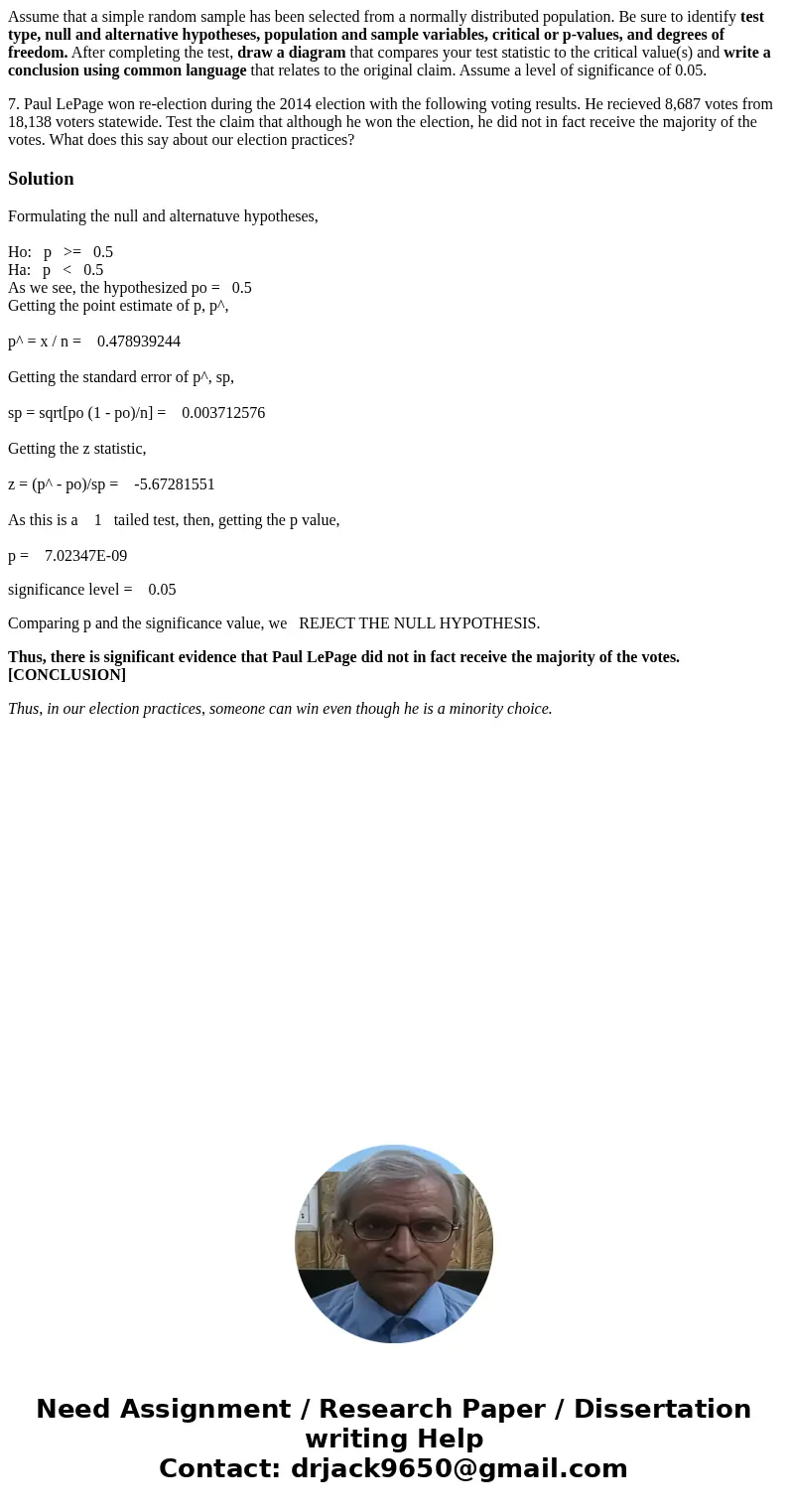Assume that a simple random sample has been selected from a
Assume that a simple random sample has been selected from a normally distributed population. Be sure to identify test type, null and alternative hypotheses, population and sample variables, critical or p-values, and degrees of freedom. After completing the test, draw a diagram that compares your test statistic to the critical value(s) and write a conclusion using common language that relates to the original claim. Assume a level of significance of 0.05.
7. Paul LePage won re-election during the 2014 election with the following voting results. He recieved 8,687 votes from 18,138 voters statewide. Test the claim that although he won the election, he did not in fact receive the majority of the votes. What does this say about our election practices?
Solution
Formulating the null and alternatuve hypotheses,
Ho: p >= 0.5
Ha: p < 0.5
As we see, the hypothesized po = 0.5
Getting the point estimate of p, p^,
p^ = x / n = 0.478939244
Getting the standard error of p^, sp,
sp = sqrt[po (1 - po)/n] = 0.003712576
Getting the z statistic,
z = (p^ - po)/sp = -5.67281551
As this is a 1 tailed test, then, getting the p value,
p = 7.02347E-09
significance level = 0.05
Comparing p and the significance value, we REJECT THE NULL HYPOTHESIS.
Thus, there is significant evidence that Paul LePage did not in fact receive the majority of the votes. [CONCLUSION]
Thus, in our election practices, someone can win even though he is a minority choice.

 Homework Sourse
Homework Sourse